 Photo: Delmaine Donson / E+ / Getty Images
Photo: Delmaine Donson / E+ / Getty Images
Choosing the perfect light fixture and an accompanying light bulb can completely transform a room. That’s why choosing the right lighting for your dining room chandelier or bedside table lamp is so important. Don’t worry—we’re here to help make the decision process easier.
Below, we’ll discuss different light bulb types and the pros and cons for each. We’ll also explain the different types of light emitted by light bulbs and how the right illumination can enhance the ambiance of a room and your mental and physical health.
Read on or skip to our infographic for interior lighting tips and to understand how different lights can affect your mood.
On This Page:
- The Main Types of Light Bulbs
- Key Light Bulb Terms Explained
- Types of Light Bulb Shapes
- Types of Light Bulb Bases
- Decorative Lighting Tips and Tricks
- FAQ About Light Bulbs
- Boost Your Mood While Reducing Your Pollution Infographic
The Main Types of Light Bulbs
 Photos: Somchai Som / Shutterstock; Chones / Shutterstock
Photos: Somchai Som / Shutterstock; Chones / Shutterstock
There are four mainstay types of lightbulbs: light-emitting diode (LED), incandescent, halogen, and compact fluorescent (CFL). Each light bulb has benefits and drawbacks. We will discuss these pros and cons below, along with the best use for each light bulb.
1. Light-Emitting Diode (LED) Light Bulbs
Light-emitting diodes, commonly referred to as LED light bulbs, first debuted in the 1960s but emitted infrared light. Over the next 20 years, red, blue, and yellow LED lights were invented. The first LEDs were expensive at around $200 per bulb. They were mainly used as indicators in professional laboratory equipment.
In the 1990s, a high-brightness blue LED light bulb was created for the residential market. At the time, though, they were quite pricey, selling at around $40 per bulb, but had a lifespan of 10 to 22 years. Now, LED lighting is still highly energy-efficient and long-lasting. They also come at a more affordable price.
LED Pros:
- Energy-efficient, contains no mercury, and are typically made from recycled materials
- Gives off little to no heat
- Long-lasting (up to 50,000 hours)
- Compatible with any fixture regardless of watt requirement
LED Cons:
- On the cooler end of the color temperature spectrum and give off blue light, which isn’t ideal for relaxing spaces in the home
- Can be prone to overheat, which can lead to bulbs operating at their peak capacity for 80% of their lifespan
Best Used For:
- Directional lighting such as floor lamps
- Night lights
- Outdoor lighting that will be left on all night
- Recessed lighting and downlight applications
2. Incandescent Light Bulbs
Incandescent bulbs are very traditional light bulbs. Incandescent light bulbs are the most common light bulbs due to being a less expensive light bulb and because they emit a warm light. Note that they’re not as energy-efficient as LED light bulbs but do last longer than halogen light bulbs.
Incandescent Pros:
- Almost always dimmable
- Gives off a warm light color
- Extremely low cost
- Comes in a variety of sizes, voltages, and wattages
Incandescent Cons:
- Lasts around one year before needing replacement
- Often gets hot quickly
- Energy-inefficient and costly for the environment due to being replaced so often
Best Used For:
- Traditional table lamps
- Chandeliers and candelabras in dining and living rooms
- Wall sconces
- Industrial interior design or home office spaces
3. Halogen Light Bulbs
Halogen light bulbs are an improved version of incandescent bulbs. They contain the same tungsten filament as incandescent bulbs but last longer. Halogen light bulbs produce white light and are typically low-cost and dimmable. They’re great for spotlighting and are often found in studio lighting fixtures in theatres and movie productions.
Halogen Pros:
- Almost always dimmable
- Gives off a white light color, which simulates high-noon daylight
Halogen Cons:
- Gets hot quickly, which can become a fire hazard if near flammable materials
- Oils from your hands can make the bulbs explode
- Somewhat energy-inefficient
Best Used For:
- Recessed lighting, pendant lights, or under-cabinet lighting
- Track lighting in kitchen areas
- Outdoor or indoor floodlights
4. Compact Fluorescent (CFL) Light Bulbs
Compact fluorescent (CFL) light bulbs are energy-efficient and low-cost CFL light bulbs are more energy-efficient than standard incandescent light bulbs but not as long-lasting as LEDs. You can normally detect a CFL light by its spiral shape, which isn’t the most attractive design.
CFL Pros:
- Less expensive than LEDs and lasts longer than incandescent or halogen light bulbs
- Recyclable after burning out
- Comes in lots of different sizes and temperatures
CFL Cons:
- Can take time to warm up and get bright
- Normally doesn’t work with dimmer switches
- Often contains small amounts of mercury vapor
Best Used For:
- Illuminating large spaces or places where lights stay on for extended periods
- Reading and table lamps
- Overhead lights in offices and hallways
Key Light Bulb Terms Explained
These four different types of light bulbs have varying characteristics when it comes to the color and temperature of light emitted and the amount of energy used. The below section will fully explain these key terms. Choosing the correct light bulb for your home will be a breeze after reading this guide.
Watts
Watts (W) are a unit of measurement for how much energy a light bulb uses. The higher the wattage, the more power a light bulb needs to produce light. For instance, a 100-watt bulb will require more power than a 60-watt bulb.
When incandescent light bulbs were the conventional norm, wattage directly correlated with brightness. Today, this correlation no longer exists due to the many light options and bulb types. Lumens are a better measurement for brightness. The chart below explains the number of watts to lumens for the four different types of light bulbs.

Lumens
Lumens are the best measurement for the amount of light a light bulb radiates—aka its brightness. The higher the lumen, the brighter the light. The number of lumens a light bulb produces is dependent on the type of bulb and its wattage.
To determine how many lumens your light bulb will need, you must first calculate the room’s square footage (the room’s length multiplied by the width). You can also use our square footage calculator. The room type will also help establish the number of lumens needed. Use the chart below to decide how many lumens you’ll need for different spaces in your home.
Note, if you’re trying to lighten up a dark room due to having little to no windows or dark paneling then you’ll likely want to add 10 lumens per square foot. Also, multiple light fixtures can brighten a room—don’t rely on one light fixture and its lumens to light up a space.

Color Temperature

Another key factor to consider when choosing the perfect light bulb is color temperature. Light color is often measured using the Kelvin (K) Color Temperature Scale. The scale typically ranges from 1,000 kelvins to 6,500+ kelvins. The four main colors are candlelight, warm white, cool/neutral white, and blue/daylight.
- Candlelight (1,000 kelvins–2,600 kelvins): Light bulbs with less than 2,000 kelvins display a dim glow that’s best for illuminating small areas such as a desk space or reading nook. Light bulbs between 2,000 kelvins and 2,600 kelvins give off a soft glow and are best for providing ambient light such as a table or floor lamp.
- Warm white (2,600 kelvins–3,000 kelvins): Warm white light bulbs give off a cozy warm yellow light, which makes them best for either overhead lights or lamps in living rooms, bedrooms, dens, and dining rooms.
- Cool or neutral white (3,000 kelvins–5,000 kelvins): Cool or neutral white light is bright and vibrant without being too harsh. They’re great for large areas or areas where you need to focus like home offices, garages, or kitchens.
- Blue or daylight (5,000+ kelvins): Blue or daylight bulbs are quite invigorating and sharp. They’re best for areas that need lots of lighting or where a specific task will occur. This includes display areas, darker home offices, garages, or other task areas.
Types of Light Bulb Shapes
Light bulbs come in a plethora of different shapes, sizes, and styles. The right shape and style can improve your home’s aesthetic. To keep track of these different types, every light bulb has a light bulb code containing letters and numbers.
The letter(s) in the code signifies the shape, while the number indicates the size in millimeters or eighths of an inch. Here is a basic breakdown of the most common light bulb shapes.

Types of Light Bulb Bases
Your light bulb base must fit your light fixture. Similar to light bulb shapes, light bulb bases also have a letter-number code. The letter designates the base’s shape and the number is the width in millimeters. The light fixtures in your home should have a label on the inside of the socket with the correct bulb base code.
The most common and popular bases are “Edisons” and have a screwed-in design. The other main types are fluorescent bin bases, BI pin bases, and twist and lock bases. The chart below visualizes these varying bases and their lettered code.

Decorative Lighting Tips and Tricks
 Photo: yamasan / iStock / Getty Images
Photo: yamasan / iStock / Getty Images
Below are a few decorative lighting tips to make the best use of your different light bulbs. We’ve also included a few holiday lighting safety tips.
Diversify Your Lighting
Lighting in your household shouldn’t be too even. In other words, you want to have lighting at varying heights. Use table lamps, floor lighting, ceiling lighting, and floor lamps to create contrast in the room.
Strategize Your Kitchen Lighting
You’ll want lots of overhead lighting in your kitchen area to serve as task lighting. We recommend using pendant lighting above the kitchen island.
You can also implement track lighting to spotlight other important areas like the kitchen sink or stovetop.
Create a Mood With Your Bathroom Lighting
For bathroom mirrors, you’ll want to use warm low-level lighting. Strive for shaded or obscured wall lights and avoid strong overhead lighting.
It’s also best to install dimmer switches. This helps to set the mood when you want to take a relaxing bath and is helpful when you go to the bathroom in the middle of the night and don’t want bright light.
Follow These Holiday Lighting Safety Tips
Regardless of which holiday you’re decorating for or if you simply enjoy having decorative indoor or outdoor lights, these tips will keep you and your home safe.
- Check new and old lights for loose connections, frayed or bare wires, and cracked sockets. Discard all damaged cords.
- Always test your lights together before hanging them—this is safer and will save you time if a set doesn’t work.
- Don’t overload an outlet. There should be no more than 1,400 watts on a circuit. If your home’s interior lights dim when the holiday or exterior lights are on, your circuit is overloaded.
- We recommend purchasing LED holiday lights. They last longer and don’t get hot to the touch, which can be a fire hazard in dry areas.
- Hire a local professional to install your holiday lights safely.
Frequently Asked Questions About Light Bulbs
We’ve covered a lot of information about the different types of light bulbs, their varying shapes and sizes, and different bases, along with a few decorating and safety tips.
Below you’ll find additional information to help determine which light bulbs to buy and use, along with the benefits of artificial lighting.
What type of light bulbs are normally used in homes?
The four main types of light bulbs are light-emitting diode (LED), incandescent, halogen, and compact fluorescent (CFL). LEDs typically have the longest lifespan, followed by CFLs, but both are slightly more expensive than incandescent or halogen light bulbs.
Due to CFL and LED light bulbs’ longer lifespans and energy efficiency, you’ll likely see them making up the majority of the residential lighting market.
How do I know what type of light bulbs to buy?
If your current light bulb goes out, check the bulb’s base size and base shape. Light bulbs will often list the size and base codes on the label.
Also, review the number of watts and lumens the light bulb produces (also stated on the label). If you want more light for the area, then increase the number of lumens. For less light, decrease the lumens.
Lastly, consider the color of the light. Use our color temperature chart above to determine which light color works best for you. Factor in the light bulb’s location and your overall lighting preferences.
Is the color of a light bulb important?
Yes, the color of the light bulb is important. Light color affects the interior of your home and can also impact your mental health. For rooms with lots of large window styles, you’ll likely want cool white light that blends in with the natural light.
For relaxing areas, such as the bedroom or a study, consider implementing candlelight or warm white. Warm white or natural white lighting is also suitable for home offices. Blue light is best for garages, exterior lights, or workspaces.
Does lighting affect your health and mood?
Lighting affects your health and mood in several ways. In general, you want a nice balance of both natural light and artificial light (light emitted from light bulbs). According to a Harvard study, most people need 10 to 15 minutes of sun exposure per day, which helps increase Vitamin D.
When little natural light is available during the fall and winter months, artificial light can help improve moods, reduce anxiety, and increase energy. In fact, during the fall and winter months, about 6% of the population experience seasonal affective disorder, or serious depression from seasonal patterns. While another 14% experience a less debilitating depression known as “winter blues.”
One study involving older people found that ambient cozy candlelight and warm white lighting reduced anxiety.
Similarly, blue light during the day can increase people’s cognitive abilities and make them more alert.
If you feel drowsy working from your home office, instead of drinking another caffeinated beverage, consider adding more daylight or blue light bulbs to your office space.
The below infographic will further discuss ways to use artificial light to benefit your mood, health, and planet Earth.
 Photos: Morsa Images / E+ / Getty Images; Donstop / iStock / Getty Images; angizzz / Shutterstock; AnVr / E+ / Getty Images; Drazen Zigic / iStock / Getty Images; visualspace / E+ / Getty Images; Goodbye Picture Company / E+ / Getty Images; RyanJLane / E+ / Getty Images; peeterv / iStock / Getty Images; Schroptschop / E+ / Getty Images
Photos: Morsa Images / E+ / Getty Images; Donstop / iStock / Getty Images; angizzz / Shutterstock; AnVr / E+ / Getty Images; Drazen Zigic / iStock / Getty Images; visualspace / E+ / Getty Images; Goodbye Picture Company / E+ / Getty Images; RyanJLane / E+ / Getty Images; peeterv / iStock / Getty Images; Schroptschop / E+ / Getty Images
Additional Information
This guide should give you all the information you’ll need to make an educated decision on the type of light bulb you want for your light fixture.
Remember, look at the inside of the socket to determine the correct bulb base and shape to purchase. Then, consider the temperature and color of the light you want and how many lumens are necessary for balanced illumination.
Lastly, make sure to turn your lights off at night or to install automatic or motion sensor lights to reduce light pollution. You can also hire an LED light installer near you to install more energy-efficient light bulbs. Doing this will allow you and others to see the night sky better and will help re-balance nocturnal ecosystems.
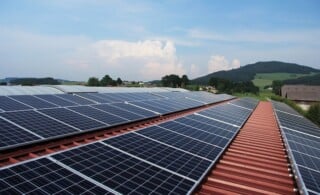 Going Green with Solar Panels in the Home
Going Green with Solar Panels in the Home 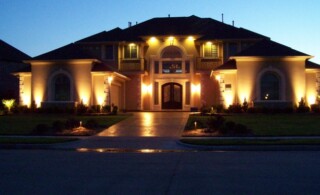 Preparing for Lighting Installation
Preparing for Lighting Installation 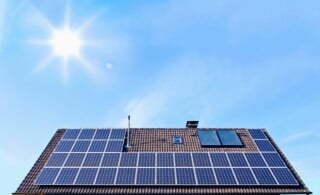 Tax Credits & Solar Shingles: Is It Finally Time to Swap to Solar Power?
Tax Credits & Solar Shingles: Is It Finally Time to Swap to Solar Power? 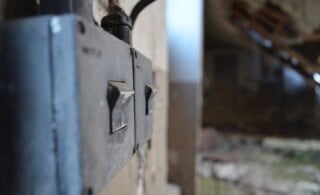 How to Wire a Light Switch
How to Wire a Light Switch 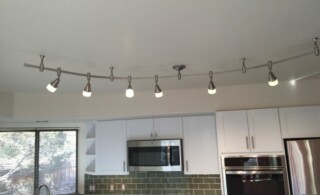 Track Facts: What To Know about Track Lighting Fixtures
Track Facts: What To Know about Track Lighting Fixtures 

Are You Familiar With This Topic? Share Your Experience.